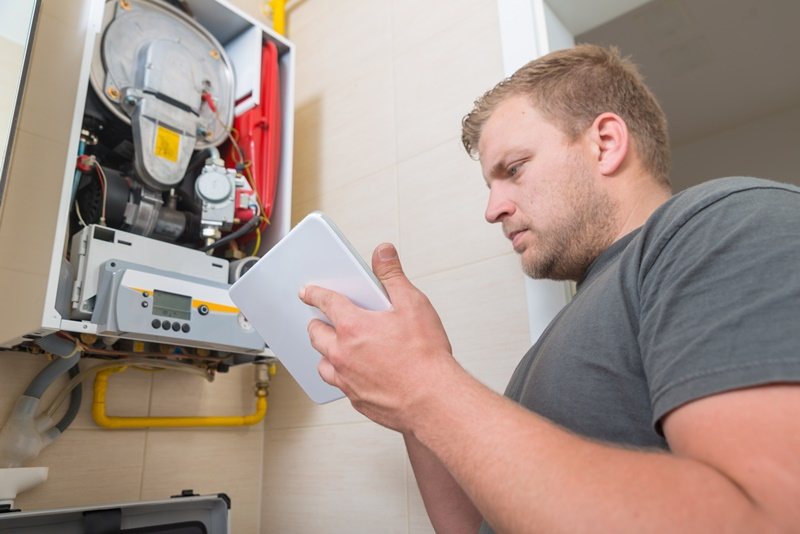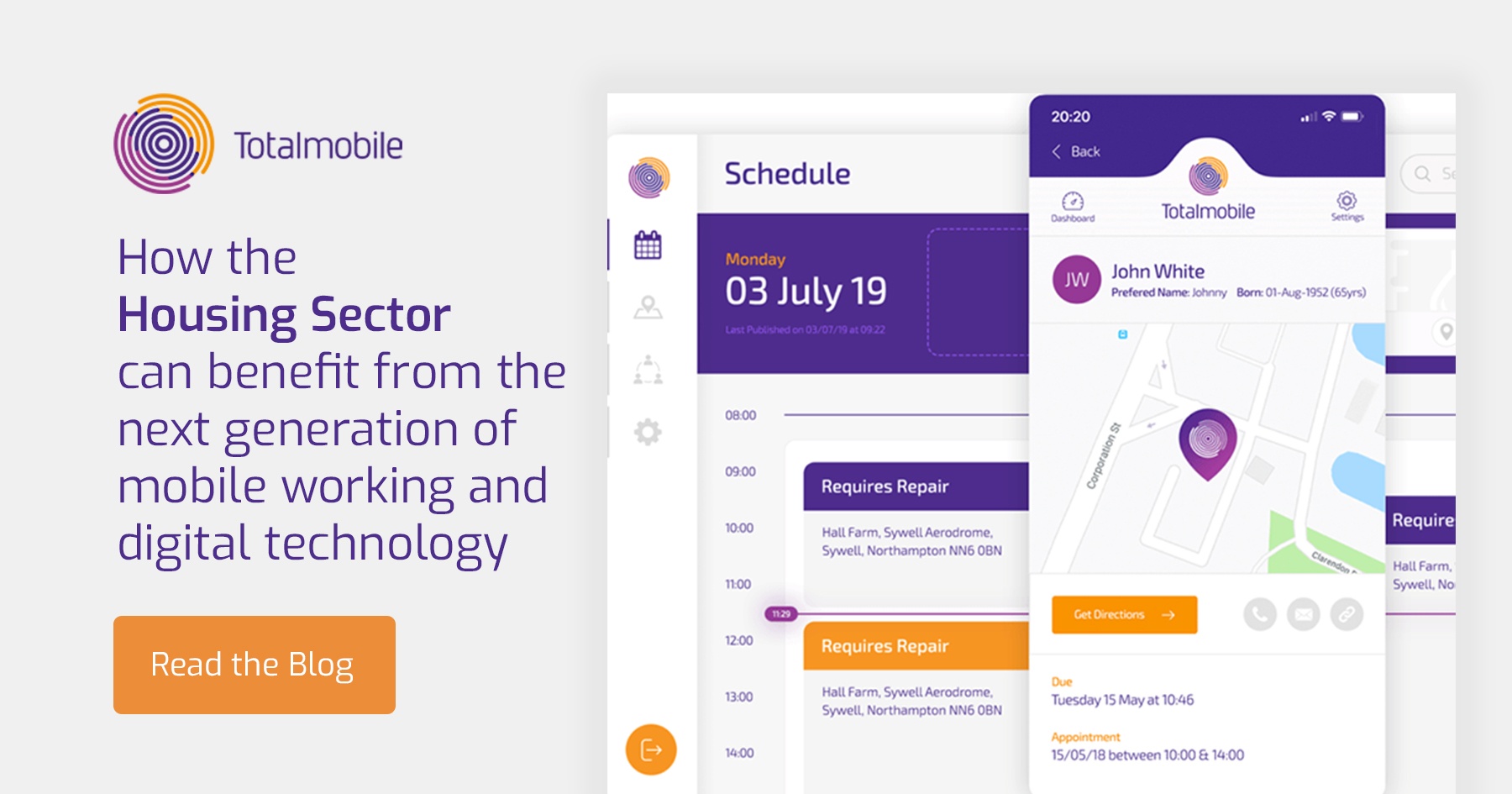In today’s business landscape, the way we work is constantly evolving, including the technology we use to manage our workforce. Managers are expected to make informed business decisions faster, while employees require more from their workplace tools. Having access to the correct technology to capture data and information and gain visibility of large field-based teams, while delivering a responsive customer service, is a must.
In particular, the housing sector are looking at ways to drive and accelerate change and digitalise the delivery of services. Dealing with challenges such as working with archaic, legacy IT infrastructure means a step change is required to increase workplace efficiencies.
So, how can advances in technology and improved mobile capabilities offers housing organisations the opportunity to create operational efficiencies and improve tenant services, both now and in the future?
Change is required:

Today, businesses are implementing modern, cloud-based mobile working and field service management solutions in order to improve and increase efficiencies within their housing and repairs field workforce. In a recent report carried out by Inside Housing, pre-covid repairs and maintenance spending was on the rise with approximately 218 housing associations reported to have spent £3.51bn in total repairs and maintenance for 2018 /2019 – a rise of 7.7% from the previous year. Despite housing associations either pausing or scaling back on maintenance projects during the pandemic, the total spend for 2019 / 2020 was £3.61bn, representing an increase of 2.8%. These figures therefore show that instead of achieving the market goal of doing more for less, they reflect the sectors are doing less, for more. Therefore, it’s clear that change is required. With the global mobile workforce expected to grow to 1.87 billion by 2022, adopting new technologies such as mobile workforce management solutions will enable housing organisations to update processes to align with wider market trends and increase repairs efficiencies to meet a continued increase in demand.
Improved functionality and capabilities:
Furthermore, as housing organisations move to a more modern approach and utilise advances in mobility and remote working, they are able to introduce further functionality with a comprehensive range of mobile capabilities to transform and streamline service delivery. Remote staff can benefit from access to more sophisticated, efficient forms and inbuilt workflows which eliminates paperwork and provides enhanced access to job records and information.
Additionally, with all mobile capabilities available via one solution, housing repairs teams can easily access asset management visibility as well as enabling real time updates directly from job activity. This enables office staff and managers to view repairs work as and when they take place and escalate any issues before they become a bigger problem.
Advances in technology in the housing sector:
Many housing associations and social landlords are starting to look at new technologies to automate processes, monitor assets and track issues such as disrepair remotely. The outcomes of this help reduce paper-based processes and empower their field staff with the innovative technology that enables them to complete their jobs efficiently.
Implementing a mobile workforce management system is an established way to improve how services are delivered. But newer technologies such as IoT and diagnostic video technology can help improve these processes further.
With an IoT empowered solution, data can be continuously captured by sensors and analysed to detect any potential issues early. For example, if temperature and humidity levels indicate a higher risk of mould or damp developing, this can be flagged before the issue escalates. Housing providers can then take a proactive approach to preventing the situation from escalating, or use this data as evidence should there be any future claims relating to disrepair.
The use of cloud-based video diagnostics can even enable potential jobs to be remotely triaged, prioritised, and occasionally completed without sending an operative to a resident’s home. This enables the housing department to reduce unnecessary jobs, minimise face-to-face contact, better prioritise emergency visits and in some instances instruct tenants how to complete simple fixes themselves.
Benefits:
- Increase capacity & productivity – Streamlines processes so field staff can spend more time delivering quality services. Removal of paper-based processes and a better informed and productive workforce increases first time fix rates and enhances the capacity of your workforce.
- Customer satisfaction – With a more efficient field workforce, service delivery is completed more effectively, consistently and on a first-time basis, increasing your quality of service, customer satisfaction and providing a better customer experience. Mobile workers are able to keep the customer updated at all stages of the visit through communications such as ‘worker on the way,’ status updates.
- Ensuring compliance standards are met – Utilising mobile technology enables instant capturing of work and access to real time information. Having visibility of all information captured via forms and having access to dashboards ensures work is evidenced and is easily accessible for auditing purposes.
- Improve cost efficiencies – Organisations can plan future investments, reduce costs of expensive repairs and increase the capacity of their workforce as their time is spent more effectively. Reducing paperwork, travel time and a reduction in costs from meeting SLA’s ensure improved cost efficiencies.
Conclusion:
It’s apparent that Housing organisations need to invest in new technologies and ways of working for their remote workforce in order to deliver a reliable and efficient quality of service. As technologies continue to evolve, so too must the Housing sector to keep up with a growing demand in housing repairs and customer expectations.
At Totalmobile, we provide a range of field service management solutions to provide your organisation with improved mobile capability to transform housing repairs, increase staff capacity and improve customer satisfaction. For further information, download our demo here.







